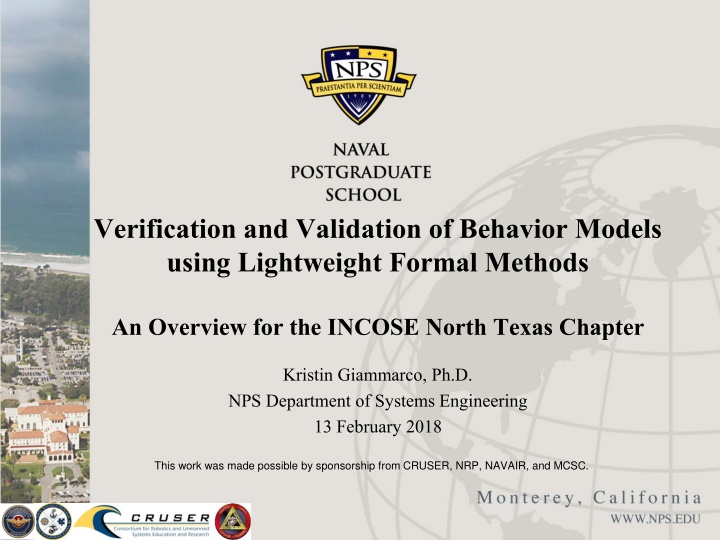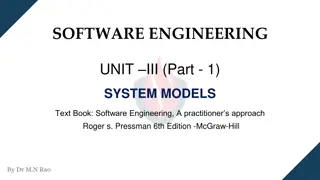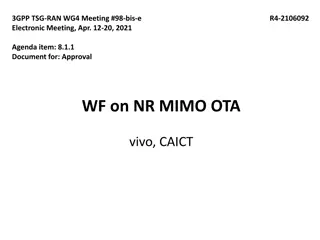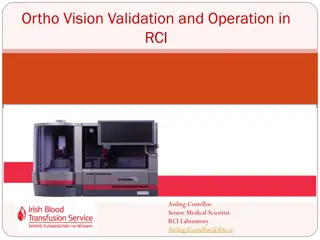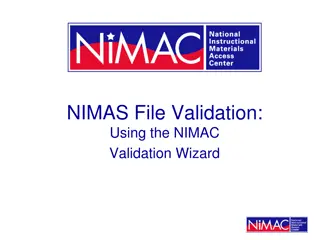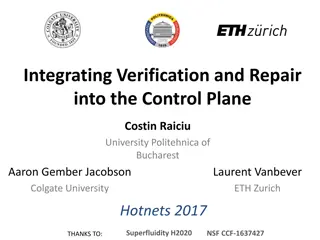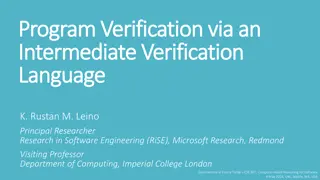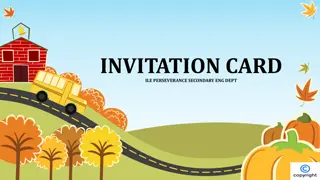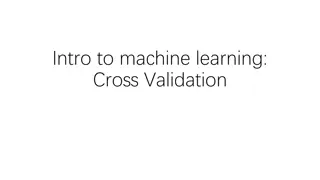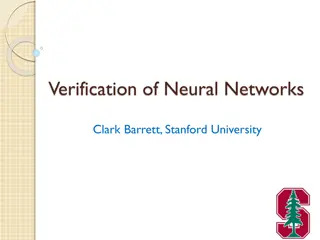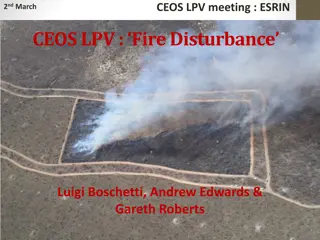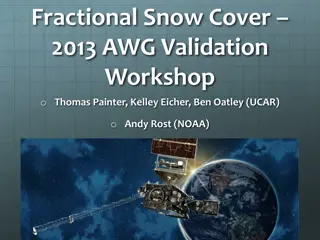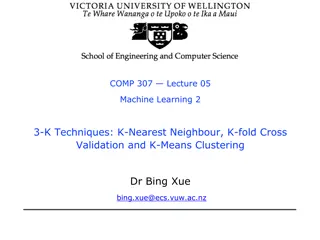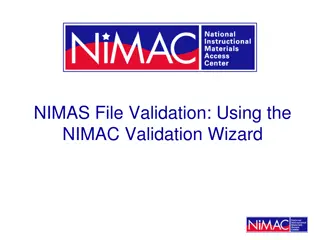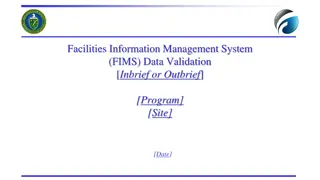Verification and Validation of Behavior Models using Lightweight Formal Methods
Overview of Monterey Phoenix, an Navy-developed framework for modeling human, technology, and environment behaviors all in one framework. Discusses the Small Scope Hypothesis in MP Analyzer Layout and provides some use cases for MP. Highlights emergent behaviors found using MP modeling.
Download Presentation

Please find below an Image/Link to download the presentation.
The content on the website is provided AS IS for your information and personal use only. It may not be sold, licensed, or shared on other websites without obtaining consent from the author.If you encounter any issues during the download, it is possible that the publisher has removed the file from their server.
You are allowed to download the files provided on this website for personal or commercial use, subject to the condition that they are used lawfully. All files are the property of their respective owners.
The content on the website is provided AS IS for your information and personal use only. It may not be sold, licensed, or shared on other websites without obtaining consent from the author.
E N D
Presentation Transcript
Verification and Validation of Behavior Models using Lightweight Formal Methods An Overview for the INCOSE North Texas Chapter Kristin Giammarco, Ph.D. NPS Department of Systems Engineering 13 February 2018 This work was made possible by sponsorship from CRUSER, NRP, NAVAIR, and MCSC.
What is Monterey Phoenix? MP is a Navy-developed framework for modeling human, technology, and environment behaviors all in one framework Behavior is defined as a set of events with two basic relations: precedence and inclusion 2
MP Analyzer Layout The Small Scope Hypothesis:most flaws in models can be demonstrated on small counterexamples 2. Run the model. 3. Inspect event traces output. 1. Type model here. 2 possible SoS behaviors at scope 1 4 possible SoS behaviors at scope 2 6 possible SoS behaviors at scope 3 Model system behaviors separately System interactions treated as constraints Exhaustive generation of SoS behaviors up to a specified scope 3
Some Use Cases for MP To verify and validate activity models developed in notations such as SysML [1] To generate comprehensive use case scenario variants for activity models [2] To count function points and estimate cost [3] To discover and document templates for behavior patterns [8] To detect, classify, predict and control emergent behaviors [7][9] 4
Emergent Behaviors Found using MP Modeling An order processing system enters a waiting state after a transaction is cancelled. (Pilcher 2015) A first responder administers rescue medication to an unconscious patient, unaware that the medication was already administered. (Bryant 2016) The International Space Station is unaware of a hazardous condition within a supply spacecraft as that spacecraft approaches to dock. (Nelson 2015) A UAV on a search and track mission reaches a return-to-base condition, then finds and begins to track a new target. (Revill 2016) A UAV on a humanitarian assistance and disaster relief mission reports acceptable system status, then the operator suddenly commands the UAV to abort the mission without provocation (Reese 2017 on Beaufait, Constable, and Jent 2017). 5
An order processing system enters a waiting state after a transaction is cancelled. Valid Scenarios: Orders conclude normally. Invalid Scenario: This order hangs in a waiting state. Example Found Requirement: The Order Processing System shall end all started transactions in either the Cancelled or Delivered state. 6 Pilcher, Joanne D. Generation of department of defense architecture framework (DODAF) models using the Monterey Phoenix behavior modeling approach. Master's Thesis, Naval Postgraduate School, Monterey, CA. September 2015.
A first responder administers rescue medication to an unconscious patient, unaware that the medication was already administered. Example Found Requirement: Any Bystander who administers Narcan to an Overdose Victim shall place a band around the Overdose Victim s wrist that indicates the amount and time of the Narcan dose administered. 7 Bryant, Jordan. Using Monterey Phoenix to analyze an alternative process for administering Naloxone. Capstone Research Project, Science and Math Academy, Aberdeen, MD. June 2016.
A UAV on a search and track mission reaches a return-to-base condition, then finds and begins to track a new target. Invalid Scenario: Target tracked after bingo fuel condition Valid Scenario: Object detected, tracked, and determined by Swarm Operator to be a valid target Example Found Requirement: A UAV that has reached a bingo fuel condition shall request permission from the Swarm Operator to track any new targets found. or Example Found Requirement: A UAV that has found a possible target after reaching bingo fuel shall relay the LKL of the target to the Swarm Operator, then continue to return to base. Revill, Michael B. UAV swarm behavior modeling for early exposure of failure modes. Master's Thesis, Naval Postgraduate School, Monterey, CA. September 2016. or 8 Example Found Requirement: A UAV shall only track targets found before reaching bingo fuel conditions.
General Analysis of Emergent Behaviors Detection: Initial discovery of emergent behavior. Classification: Simple: derived from element properties and relationships in non- complex or ordered systems [5]. Weak: desired (or at least allowed) emergence produced by a complex system [5]. Strong: unexpected emergence not observed until simulation, testing, or operations [6]. Prediction: Postulation of potential future states of emergence based on detected behaviors. Control: Management of positive or negative emergent behaviors through M&S or other analysis. 9 Definition set paraphrased from [4]
Example Analysis of Emergent Behaviors with MP Example Slide Detection Classification Prediction Control Pilcher s Order Processing System 6 left Automatic and scope-complete with MP Simple positive emergence Simple positive emergence Simple negative emergence Order Cancelled - 6 middle Order Delivered - 6 right Order hangs in a Waiting state: Customer inconvenience; employee inconvenience; Cyber security vulnerability Behavior logic modification in system model to prevent sequences that end in Waiting state Revill s UAV Mission 8 left Automatic and scope-complete with MP Weak positive emergence Valid target detected and tracked - 8 right Strong positive emergence UAV is successfully recovered after tracking an object of interest after bingo fuel Add details to the model to be explicit about requirements to ensure this outcome Strong negative emergence UAV forced to emergency land / crash after tracking an object of interest after bingo fuel Add details to the model to be explicit about requirements to mitigate this risk 10 Analysis from Table 1 in [7].
Conclusions Unspecified and potentially invalid behaviors have been exposed by students ranging from high school to graduate level education. Suggests that MP s lightweight formal method approach is user friendly for practitioners with basic skills in logic and logical thinking. To expose emergent behaviors for analysis: model possible events in systems, and treat interactions among events in different systems as constraints that can be relaxed or restricted. 11
Questions? Monterey Phoenix and Related Work: https://wiki.nps.edu/display/mp firebird.nps.edu 12 kmgiamma (at) nps.edu
References 1. Giammarco, Kristin. Practical Modeling Concepts for Engineering Emergence in Systems of Systems. Proceeding of the 12th Annual System of Systems Engineering Conference, Waikoloa, HI, June 18-21, 2017. Giammarco, Kristin, Kathleen Giles, and Clifford A. Whitcomb. Comprehensive use case scenario generation: An approach and template for modeling system of systems behaviors. Proceeding of the 12th Annual System of Systems Engineering Conference, Waikoloa, HI, June 18-21, 2017. Farah-Stapleton, Monica. Executable behavioral modeling of system- and software- architecture specifications to inform resourcing decisions. Doctoral Dissertation, Naval Postgraduate School, September 2016. Rainey, Larry and Mo Jamshidi. Introduction and Overview for Engineering Emergence: A Modeling and Simulation Approach, Chapter 1 in Engineering Emergence: A Modeling and Simulation Approach, edited by Larry Rainey and Mo Jamshidi. Boca Raton, FL: CRC Press Taylor & Francis Group. Page, S.E. 2009. Understanding Complexity. The Great Courses. Chantilly, VA, USA: The Teaching Company. SEBoK authors. 2017. System of Systems (SoS), in BKCASE Editorial Board. 2016. The Guide to the Systems Engineering Body of Knowledge (SEBoK), v. 1.8. R.D. Adcock (EIC). Hoboken, NJ: The Trustees of the Stevens Institute of Technology. Released 27 March 2017, http://sebokwiki.org/wiki/Systems_of_Systems_(SoS)#Definition_and_Characteristics_of_Systems_of_Systems (accessed 12 July 2017). Giammarco, Kristin and Mikhail Auguston. Behavior modeling approach for the early verification and validation of system of systems emergent behaviors, Chapter 17 in Engineering Emergence: A Modeling and Simulation Approach, edited by Larry Rainey and Mo Jamshidi. Boca Raton, FL: CRC Press Taylor & Francis Group. Quartuccio, John and Kristin Giammarco. A model-based approach to investigate emergent behaviors in systems of systems, Chapter 18 in Engineering Emergence: A Modeling and Simulation Approach, edited by Larry Rainey and Mo Jamshidi. Boca Raton, FL: CRC Press Taylor & Francis Group. Giammarco, Kristin and Kathleen Giles. Verification and validation of behavior models using lightweight formal methods. Proceedings of the 15th Annual Conference on Systems Engineering Research. Redondo 2. 3. 4. 5. 6. 7. 8. 13 9.
